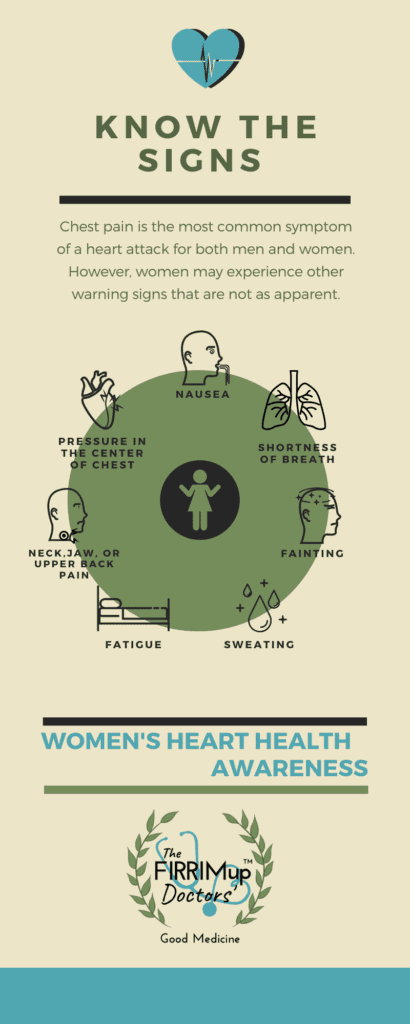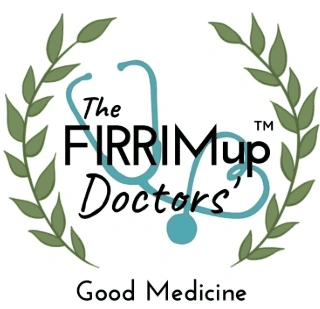Women’s Heart Health

Who Does Heart Disease Affect?
Heart disease claims the life of an individual every minute in the United States. Shockingly, the risk of heart disease is the same in both women and men, but women are less likely to receive a prompt diagnosis and therefore treatment. Also because of the protection of estrogen – the rates of heart disease occur ten years later in women versus men although the gap narrows with age. Only 1 in 5 women consider heart disease to be a threat to their health; however, they are 10 times more likely to die from heart disease than breast cancer. While men and women’s hearts may be anatomically similar, there are different risk factors and symptoms that contribute to this diagnosis leading to worse outcomes in females. By improving your knowledge on this topic, you can do your part to protect yourself and the women in your life.
Risk Factors
Some significant differences of heart disease between men and women are the unique risk factors that women have. The American Heart Association has recently released a study that states factors like depression, anxiety, and stress have a more profound effect on a woman’s heart than on a man’s. These psychological risk factors come in addition to the traditional, physical ones such as high blood pressure, smoking, and a family history of heart disease.
Blood Pressure – What Does it Mean?
Blood pressure is a measure of how hard the blood in your body is pushing against your artery walls. The first/top number is the systolic blood pressure, which measures how forcefully the blood pushes against the artery walls when being pushed out of the heart. The second/bottom number is the diastolic blood pressure. It measures how hard the blood pushes against the artery walls when the heart is refilling. This measurement is taken every time you see a medical professional and can be used as evidence in a vast number of medical diagnoses. So how do these numbers relate to heart disease? An individual with hypertension (high blood pressure) has a higher risk of developing heart disease. 1 in 3 Americans have hypertension and it is often known as the silent killer because you may not know you have this unless you are regularly monitoring it.
A healthy artery is strong and flexible, with a smooth inner lining (the endothelium) that allows blood to flow freely. This smooth inner lining becomes damaged over time in hypertensive individuals, allowing dietary fat to collect in the damaged arteries. Over time the artery walls harden, restricting blood flow throughout the body. Think of this process as a roadway. If you’re driving down a straight, hazard-free road, it’s going to be smooth driving. But if you are driving down a road with hazards like broken down cars, pedestrians, and lane closures, it’s going to be a more difficult drive. This reflects the time and effort it takes for your heart to pump blood to your body when your arteries are free of buildup compared to what can happen with heart disease. Please reach out to a medical provider if you feel you may be at risk for high blood pressure.

Women’s Symptoms vs. Men’s Symptoms
The symptoms that likely come to mind with heart disease and heart attacks are chest pain and shortness of breath. However, women are more likely to have additional symptoms in place of or in addition to the ones expected in men. Women may feel lightheaded, experience nausea or fatigue, or have jaw or neck pain. Without the overwhelmingly obvious chest pain, it’s easy to see how these symptoms can be confused with other, less serious, medical conditions. Additionally, women are more likely to experience symptoms when they are sleeping, whereas men are more likely to experience symptoms when they are being active. Women often arrive at the ER after heart damage has already occurred due to the confusion with their initial symptoms. It’s vital to be aware of the symptoms of heart disease that are associated with your gender in order to receive prompt treatment when something like this occurs.
Healthy Lifestyle
Once heart damage has already occurred, it can’t be undone. The best thing you can do to prevent heart disease is to live a healthy lifestyle. Making the choices to stop smoking and start exercising regularly are two very important changes that can be made to live a more robust lifestyle. The average individual should participate in approximately 150 minutes of physical activity each week. That can be as simple as taking a half an hour walk 5 days a week. Also consider a heart healthy diet, such as the Meditarranean diet or Intermittent fasting. Living a well-balanced, healthy life is key to decreasing your risk for heart disease.
Meditation, Tai chi (Qigong) and yoga can increase your relaxation response and decrease your fight or flight or sympathetic tone.
Additional Reading:
If you are interested in the topics and want to dive a little deeper, check out these articles!
- Article on the benefits of Tai Chi (July 2011):
https://www.ncbi.nlm.nih.gov/pmc/articles/PMC3085832/pdf/nihms281835.pdf - Article on the Mediterranean Diet (March 2019):
https://www.ncbi.nlm.nih.gov/pmc/articles/PMC6471908/pdf/nutrients-11-00655.pdf - Our blog on the benefits of Intermittent Fasting:
https://firrimupdoctors.com/intermittent-fasting/
